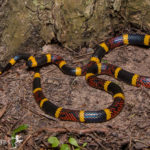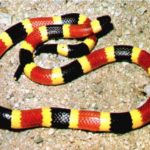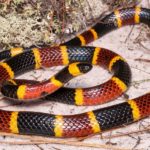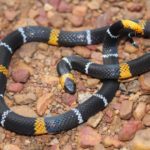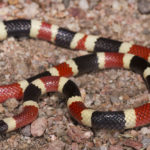
Native to central Arizona down into southwestern Sinaloa, Mexico, the Sonoran Coralsnake (Micruroides euryxanthus) is comprised of three subspecies, with the Arizona Coralsnake (Micruroides e. euryxanthus) being the only subspecies located in the U.S. M.euryxanthus australis is found in Sonora, Mexico, and M.euryxanthus neglectus is found in Sinaloa, Mexico. Several physical characteristics that differ fromRead More
